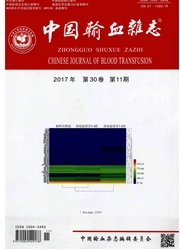

 中文摘要:
中文摘要:
目的探讨别嘌呤醇引起的皮肤不良反应与地4-B^*5801基因基因的相关性。方法通过收集本院服用别嘌呤醇患者及因服用别嘌呤醇引起不同程度皮肤不良反应的的病例,检测其且M—B^*5801基因的携带情况,分析别嘌呤醇引起的皮肤不良反应与HLA—B^*5801基因的相关性。结果服用别嘌呤醇患者的HLA—B^*5801基因携带率为11.9%,发生严重皮肤不良反应患者的该基因携带率高达50%(x^2=20.51,P〈0.05),出现Stevens-Johnson综合征(SJS)和中毒性表皮坏死松解(TEN)的患者100%携带有HLA—B^*5801基因。结论别嘌呤醇引起的严重皮肤不良反应与HLA—B^*5801基因有密切相关,建议首次服用别嘌呤醇患者检测HLA—B^*5801基因。
 英文摘要:
英文摘要:
Objective To study the correlation between allopurinol-induced cutaneous adverse reactions and HIM-B* 5801 gene. Methods Cases were collected on those patients who took allopurinol and caused varying degrees of adverse skin reactions. Then, the HLA-B* 5801 gene was detected. Analysis of the relationship between adverse skin reactions and HLA-B* 5801 gene was conducted. Results The HLA-B* 5801 gene-positive rate in patients taking allopurinol was 11. 9%, of which, those with severe skin reactions reached 50% (x^2 = 20. 51, P 〈 0. 05 ). Each patient who was diagnosed with Stevens-Johnson syndrome or toxic epidermal necrolysis had HLA-B* 5801 gene. Conclusion Severe skin reactions in patients taking allopurinol and the HLA-B* 5801 gene are closely related. The first time patients take allopurinol, they are recommended to get tested for HLA-B * 5801 gene.
 同期刊论文项目
同期刊论文项目
 同项目期刊论文
同项目期刊论文
 Extracellular Ubiquitin Enhances the Suppressive Effects ofRegulatory T cells on Effector T cell Res
Extracellular Ubiquitin Enhances the Suppressive Effects ofRegulatory T cells on Effector T cell Res 期刊信息
期刊信息
